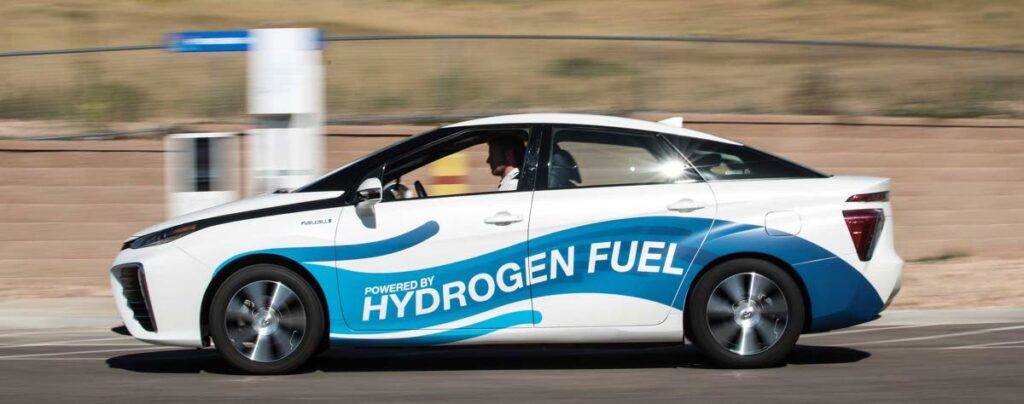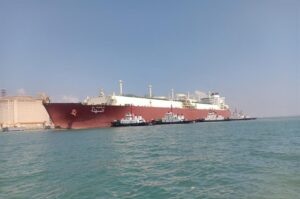
(Trinidad and Tobago Newsday, 16.Oct.2022) — This is part two of a Climate Tracker inquiry into Trinidad and Tobago’s energy transition. The first article was published on October 9.
To date, this country produces grey hydrogen, which is hydrogen created from natural gas. Sunday Newsday spoke to Dr Vernon Paltoo, president of National Energy, on October 1 to discuss how the country is perfectly positioned as an energy producer to transition into a green-hydrogen economy.
In the near future, as an intermediate step, there is a national programme on carbon capture, utilisation and storage (CCUS). This means the carbon that has been emitted when grey hydrogen is produced will be stored. That is a carbon-reduction measure.
“So we are looking at, as a country right now, how to do that in an economical fashion,” Paltoo said.
Blue hydrogen is where the carbon dioxide that has been emitted when grey hydrogen is produced is captured and stored.
“If we are able to capture that carbon dioxide, we transform it to blue hydrogen, which has a lower carbon footprint – but that does not mean that carbon dioxide does not exist. It means that we capture it and store it underground, or we find another use for it in terms of another product or an input to another product.”
Paltoo describes this as an intermediate step for getting to green hydrogen, where carbon isn’t used at all. Currently, there is a national effort to formulate a strategy and a plan to get to the blue hydrogen or carbon-capture utilisation.
Because TT is primarily an energy economy, some of the infrastructure needed for a clean energy transition that leads to net zero-carbon emissions already exists.
“Because of TT’s history in the energy sector, the country is well positioned to make a transition to clean energy. That is again where we benefit from what we have already. We do actually have some of the infrastructure required, as a result of our gas and oil industry.”
Beyond blue hydrogen, the country is working to make hydrogen from renewable energy only, which does not require gas to be used. This is called green hydrogen.
The renewable energy needed will come from solar photovoltaic (PV) or wind energy, and creates power that drives the electrolysers.
An electrolyser is a device that uses electricity to break water into hydrogen and oxygen. That hydrogen is used to create green hydrogen because there’s no carbon associated with its production.
“That is where we are going in the future with the production of green hydrogen only from renewable energy.
“Renewable energy will be a combination of solar and wind, right for the future, because we don’t have sufficient land space in terms of producing enough electricity with solar PV: that is why we have to use wind as well,” Paltoo said.
Studies are currently being done to determine the best locations for wind energy.
Paltoo believes a nationwide adoption of green hydrogen as an energy resource that will replace fossil fuels will take place in 2050 or 2060. But while green hydrogen is planned as a long-term initiative, the intention is to start pilot plant programmes as early as next year.
Addressing why the adoption of a clean energy industry seems to be going slowly, Paltoo said the studies and plans for a transition take time.
“These things don’t just happen overnight. We start today because all of the studies have been done. All the projects have been done. All of the pilot plant studies have been done. All the funding for these things have been done to start the transition…we have a unique position in terms of where we can position this country to be a leader in the production of hydrogen in the region.”
Paltoo believes the country is on course to hit the target of 15 per cent carbon reduction by 2030.
In fact, he said, “We would reach that easily because of the projects that we started.”
Project Lara alone, he said, would help reduce carbon emissions significantly.
“There are several initiatives that the country will take into account between now and 2030 that are all geared to getting us to that 15 per cent reduction by 2030.”
The long-term goal now is to get the country to net-zero carbon emissions.
“When we get to 15 per cent, that means we still have 85 per cent of our emissions, and we want to get to zero, right? That’s the point where you want to get to zero and that does not happen like that. Zero means we use no fossil fuels at all, nothing, no gas in the gas station, nothing. Nothing at all for power generation. That in itself is a global shift that is not something unique to TT.”
According to the UN Environment Programme, TT is ranked as a large carbon emitter per capita, with 36.4 tonnes of greenhouse gasses emitted per capita. But don’t let the numbers fool you, TT is also the 81st carbon emitter globally with 47.49 million tonnes of greenhouse gases released in 2018. China, the overall largest greenhouse gas emitter released13,739.79 million tonnes of greenhouse gases in 2018 but is regarded as only emitting 9.71 tonnes of greenhouse gas per capita.
Paltoo said on an absolute basis the country is a small emitter, but on a per-capita basis, it’s ranked high, because of the small population of 1.4 million, coupled with the fact that TT is a large petrochemical producer. Ammonia alone, he said, produces a lot of carbon emissions.
“So when you do it on a per-capita basis we have a high emissions ranking, but on an absolute scale, we are not significant. It is not a large quantity…
“As a small country, these things have to be taken into context. because our absolute numbers are not high…But that does not mean that it is something to ignore, or we shouldn’t be cognisant of our role as global citizens. We all have a part to play. Every country has a role to play in carbon reduction.”
Paltoo believes the country is fully on track with the energy transition and a low-carbon future.
“As a country, we are committed to a strategy that will get us there. That is all work in progress…We see the creation of a hydrogen economy as the end goal, and that is what we will be ultimately working on with all of these projects that we are doing with the creation of a low-carbon energy industry into the future.”
He said almost everything must make economic sense, which is why the energy transition is so structured.
“At the end of the day, projects have to be driven by sound economic fundamentals. And as a country, based on our experience and track record with gas in particular, we are comfortable that we have the necessary competitive base to operate in that space where we are competitive in terms of driving this project from an economic perspective…the projects can stand on their own from an economic perspective and that’s very important.”
This past week Paltoo travelled to Colombia to speak at a hydrogen conference, H2LAC, the second Hydrogen Conference of Latin America and the Caribbean. He spoke to Sunday Newsday before his trip to the conference and said he was travelling there to discuss from a regional perspective how TT could be a leader in driving a hydrogen economy that will turn the country’s energy industry into an asset for the entire region in the future.
____________________
By Rachael Espinet

